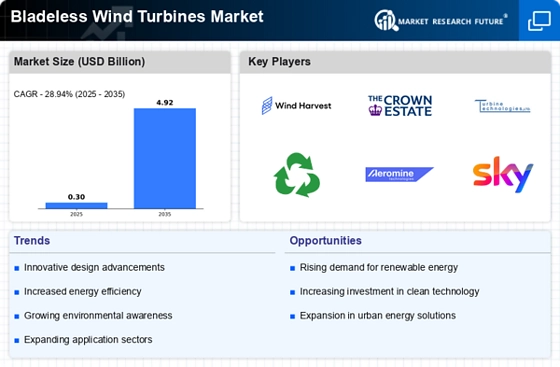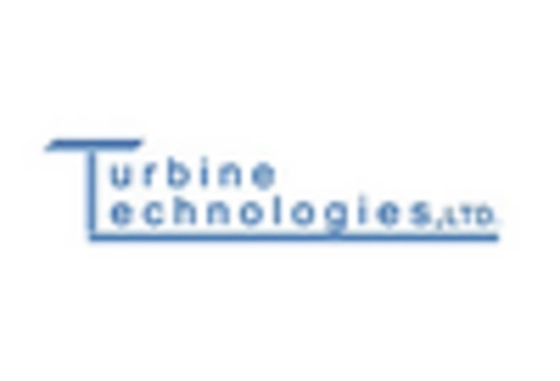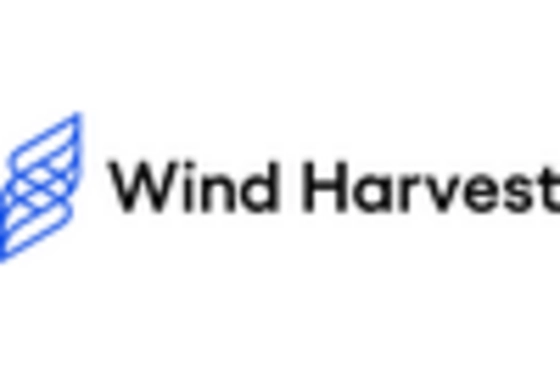Cost-Effectiveness
Cost-effectiveness is emerging as a vital driver for the Bladeless Wind Turbines Market. As the technology matures, the production costs associated with bladeless turbines are decreasing, making them more competitive with traditional wind energy solutions. The lower operational and maintenance costs associated with bladeless designs further enhance their appeal. This cost advantage is particularly attractive to investors and energy developers looking for viable renewable energy options. Recent studies indicate that the levelized cost of energy for bladeless turbines is becoming increasingly favorable compared to conventional wind turbines. As the market continues to evolve, the Bladeless Wind Turbines Market is likely to attract more investments, driven by the promise of cost-effective renewable energy solutions.
Regulatory Support
Regulatory support is a significant driver for the Bladeless Wind Turbines Market. Governments worldwide are implementing policies and incentives to promote renewable energy adoption. This includes tax credits, grants, and favorable tariffs for renewable energy projects. Such supportive frameworks encourage investments in innovative technologies like bladeless wind turbines. In many regions, regulatory bodies are setting ambitious renewable energy targets, which further stimulates market growth. The Bladeless Wind Turbines Market stands to gain from these favorable regulations, as they create a conducive environment for the deployment of new technologies. As more countries commit to reducing greenhouse gas emissions, the demand for sustainable energy solutions is expected to rise, benefiting the industry.
Technological Innovations
Technological innovations play a crucial role in shaping the Bladeless Wind Turbines Market. Advances in materials science and engineering have led to the development of more efficient and durable bladeless turbine designs. These innovations not only enhance energy capture but also reduce maintenance costs, making them more appealing to investors and operators. The market has seen a rise in research and development activities aimed at optimizing turbine performance. For instance, the integration of advanced sensors and control systems allows for real-time monitoring and adjustments, further improving efficiency. As technology continues to evolve, the Bladeless Wind Turbines Market is likely to experience accelerated growth, driven by the demand for cutting-edge renewable energy solutions.
Sustainability Initiatives
The increasing emphasis on sustainability initiatives is a primary driver for the Bladeless Wind Turbines Market. As nations strive to meet renewable energy targets, the demand for innovative energy solutions rises. Bladeless wind turbines, which produce energy without the need for traditional blades, offer a unique advantage by minimizing environmental impact. This technology aligns with global efforts to reduce carbon footprints and promote clean energy. In recent years, investments in renewable energy have surged, with the wind energy sector witnessing a notable increase in capacity. The Bladeless Wind Turbines Market is poised to benefit from this trend, as more stakeholders recognize the potential of sustainable energy solutions that are both efficient and environmentally friendly.
Public Awareness and Acceptance
Public awareness and acceptance of renewable energy technologies are crucial drivers for the Bladeless Wind Turbines Market. As communities become more informed about the benefits of clean energy, there is a growing demand for innovative solutions that minimize environmental impact. Bladeless wind turbines, with their unique design and reduced noise pollution, are gaining traction among consumers and local governments. Educational campaigns and outreach programs are helping to demystify this technology, fostering a positive perception. Increased public support can lead to more favorable policies and funding opportunities, further propelling the growth of the Bladeless Wind Turbines Market. As awareness continues to rise, the potential for widespread adoption of bladeless turbines appears promising.


















Leave a Comment